Modern consumers expect more from shopping than just purchasing goods. They seek experiences that are impossible to get online. The integration of digital technologies creates an interactive environment where every visit becomes an exciting adventure.
As e-commerce rapidly develops, traditional retail is forced to adapt to remain competitive. The key to success lies in integrating digital technologies into the physical space of stores, providing a unique experience for shoppers and opening new business opportunities. Clever teams find special approaches to customers, reimagining shopping as an experience.
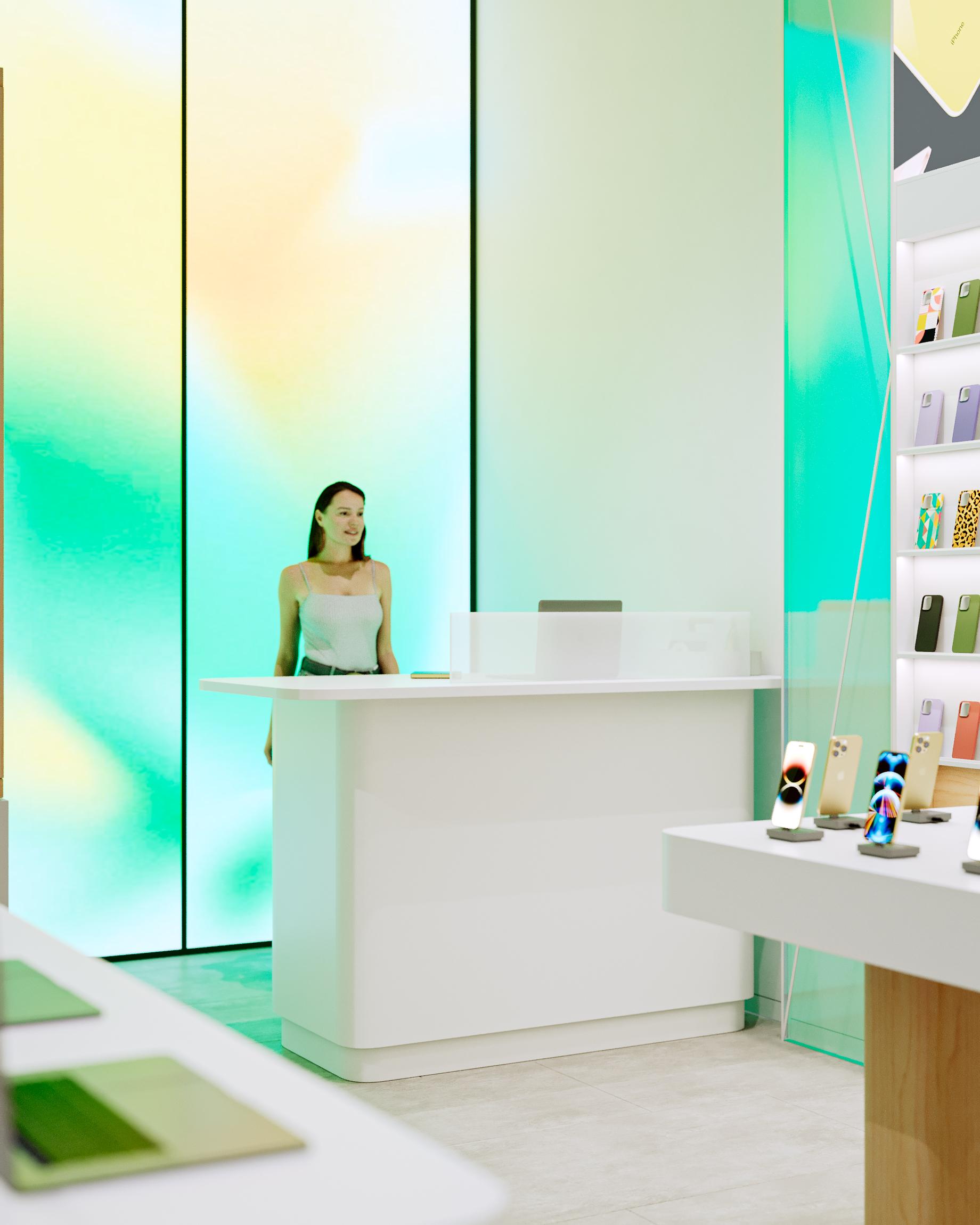
Retail space. Design by ZIKZAK Architects
What technologies are used in modern retail?
Interactive Displays
Touch screens and interactive shop windows provide detailed product information, show reviews from other customers, and offer personalized recommendations. Interactive projections covering entire surfaces of walls, ceilings, and floors create a wow effect. For example, our design for the GLO store, where media planes envelop the floors, visually dissolving the space and focusing attention on the perception of aromas.
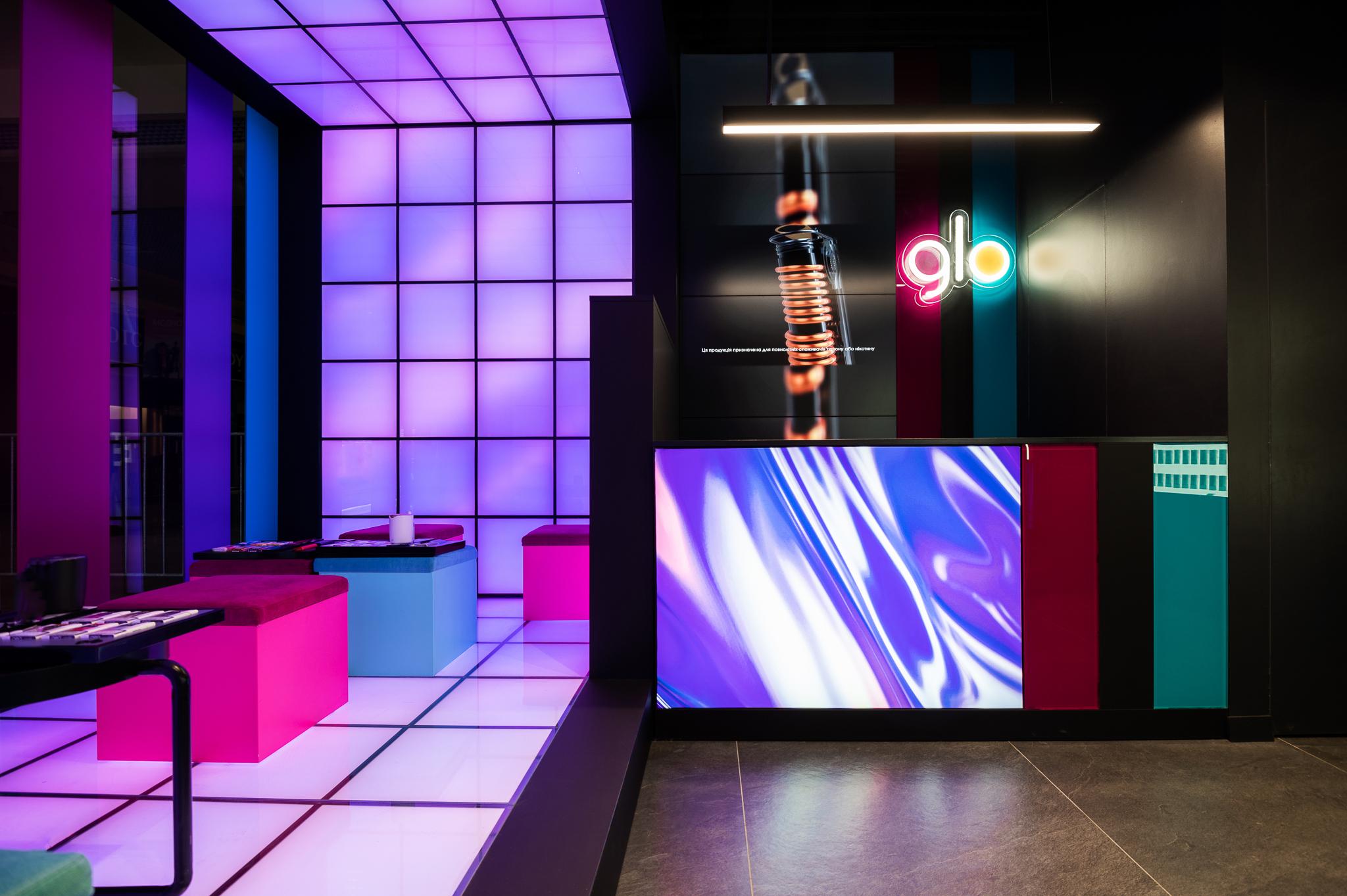
Retail space. Design by ZIKZAK Architects
Contactless payment technologies and self-service checkouts accelerate the purchasing process, reducing queues and increasing customer satisfaction. For example, the payment system in Amazon stores that allows customers to pay with a wave of their palm. The Amazon One system stores the customer's palm print on their registered credit card. This enables opening automatic doors when entering the store and paying for purchases in the network's stores equipped with self-service checkouts.
Radio Frequency Identification (RFID) and Internet of Things (IoT)
These technologies optimize inventory management, providing accurate real-time information about product availability. RFID tags on products automatically transmit data about their location and quantity. IoT sensors constantly monitor storage conditions (temperature, humidity, etc.). Managers receive up-to-date information about inventory status without manual checks. Process automation, supply chain optimization, and increased warehouse operation efficiency are ensured by RFID and IoT. These technologies allow companies to significantly improve efficiency, reduce costs, and increase customer satisfaction.
Customer Behavior Analytics
Cameras and sensors, combined with machine learning algorithms, analyze customer behavior, helping to optimize product placement and personalize offers.
Augmented Reality (AR)
AR applications allow shoppers to "try on" clothes or furniture virtually without entering a fitting room. This saves customers' time and reduces the number of product returns.
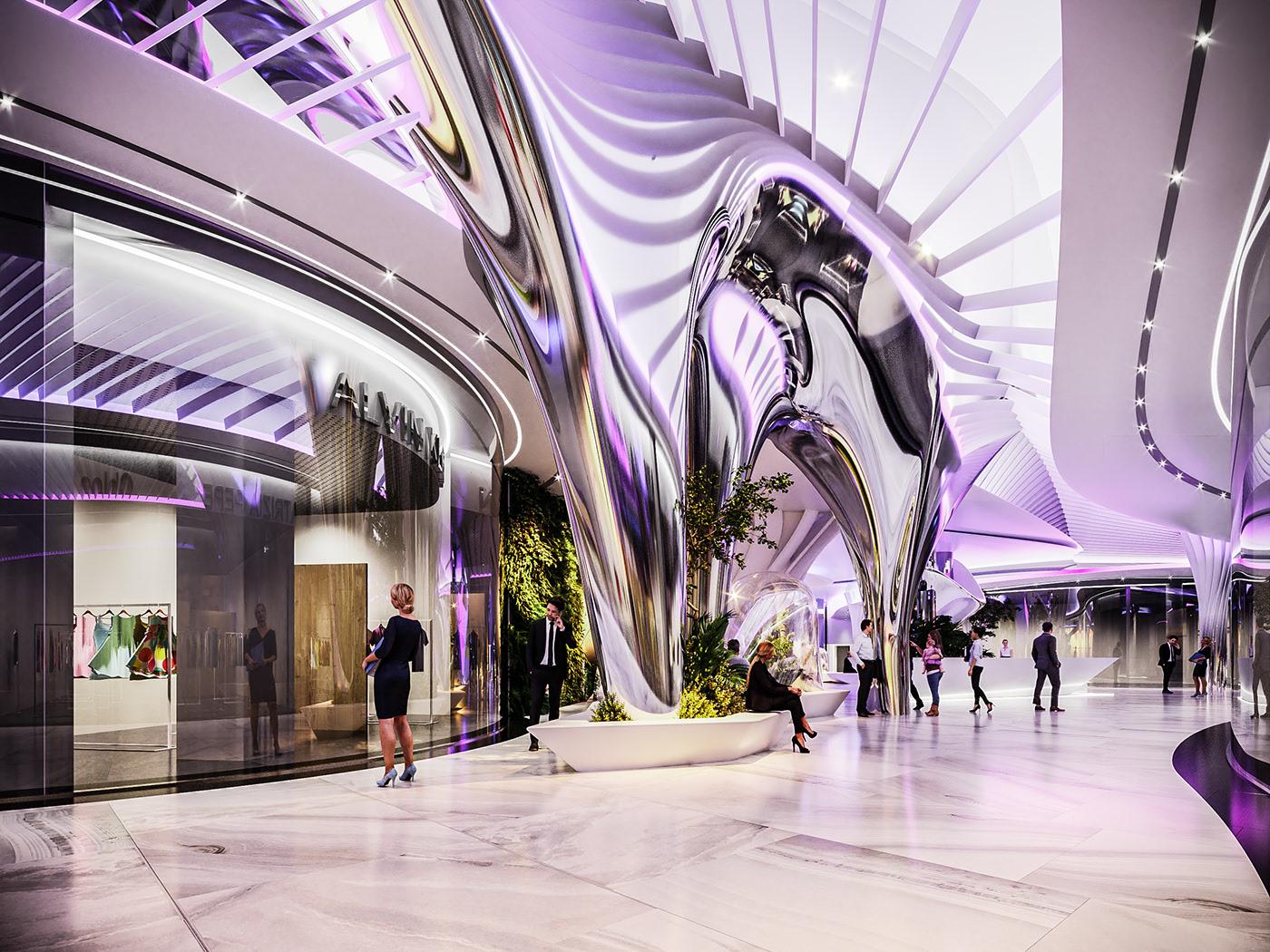
Retail space. Design by ZIKZAK Architects
For businesses, the implementation of digital technologies has several advantages:
- increasing customer engagement;
- increasing the average purchase amount through personalized recommendations;
- optimizing operational processes;
- obtaining valuable data on customer behavior;
- creating an omnichannel experience - one that uses absolutely all ways of connecting the brand with the customer.
The implementation of digital technologies in physical space requires significant investments and can cause integration difficulties. But not always: they can be optimized by specifying the tasks that these technologies should solve in each particular case. The key to success is a step-by-step approach and collaboration with experts in commercial interior design and IT integration. The role of design in this transformation is crucial. A professional commercial interior design studio can help integrate digital technologies in a way that organically fits into the space, emphasizing the brand and creating a comfortable environment for shoppers.

Retail space. Design by ZIKZAK Architects
The development of information technologies indicates that the boundary between the digital and physical space will continue to blur. The stores of the future will not just be places for shopping but innovative hubs where technology creates a unique, personalized experience for every visitor.
Integrating digital technologies into the physical retail space is not just a trend but a necessity for businesses that aim to remain competitive in the digital age. This is the path to creating a unique shopping experience that combines the convenience of online shopping with the advantages of physical stores.
Today's consumers expect more from shopping than just buying things. They are looking for experiences that cannot be had online. The integration of digital technologies creates an interactive environment where every visit becomes an exciting adventure.
Online commerce is booming and traditional retail has to adapt to stay competitive. The key to success is to integrate digital technology into the physical space of the store. This creates a unique experience for shoppers and opens up new business opportunities. Savvy teams are finding unique ways to engage customers and redefine shopping as an experience.
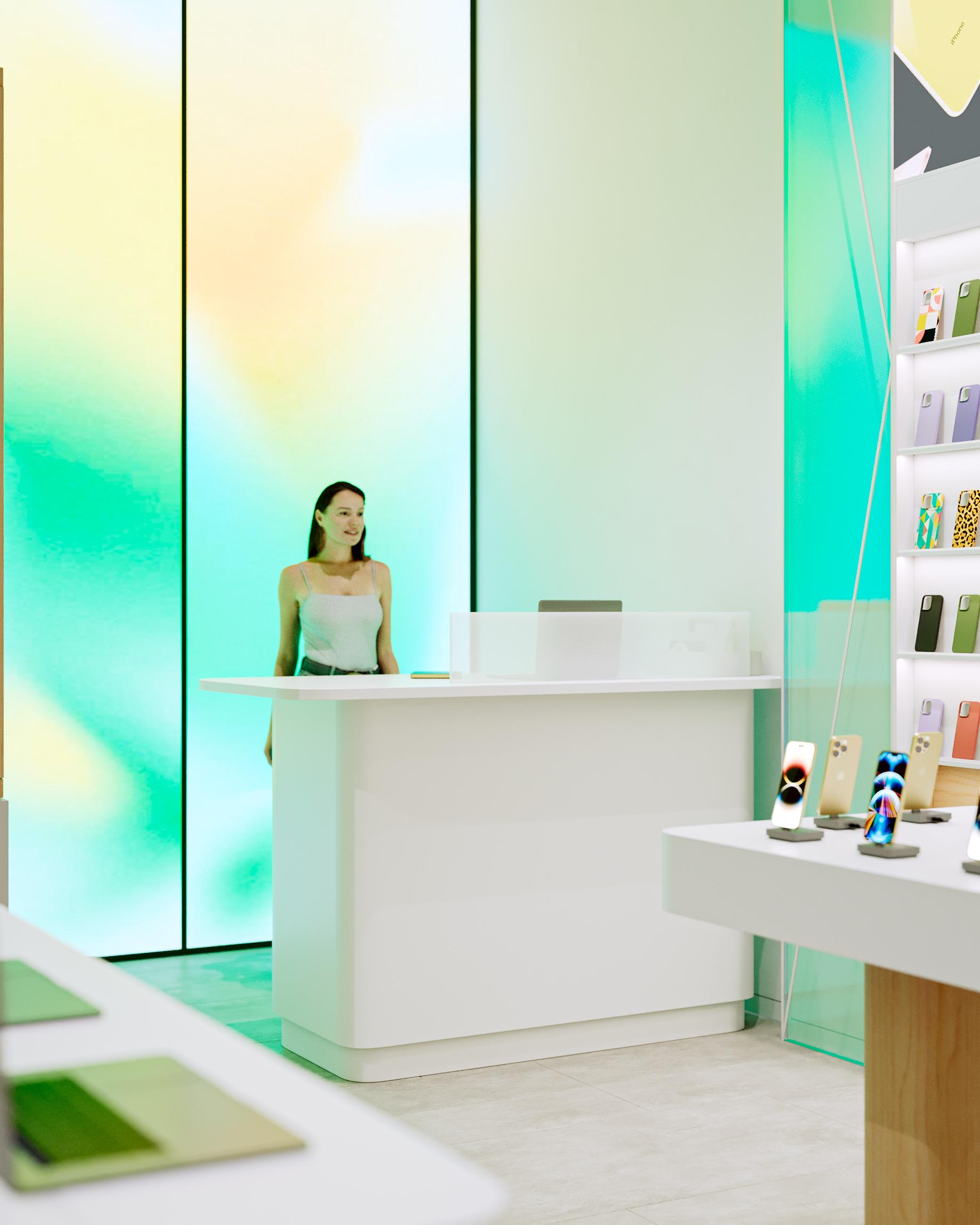
Retail space. Design by ZIKZAK Architects
What technology is used in modern retail?
Interactive displays
Touch screens and interactive displays provide detailed product information, show feedback from other shoppers and offer personalised recommendations. Interactive projections that cover entire planes of walls, ceilings and floors create a wow effect. For example, our design for the GLO store, where media planes wrap around surfaces, visually dissolving the space and focusing attention on the perception of flavour.
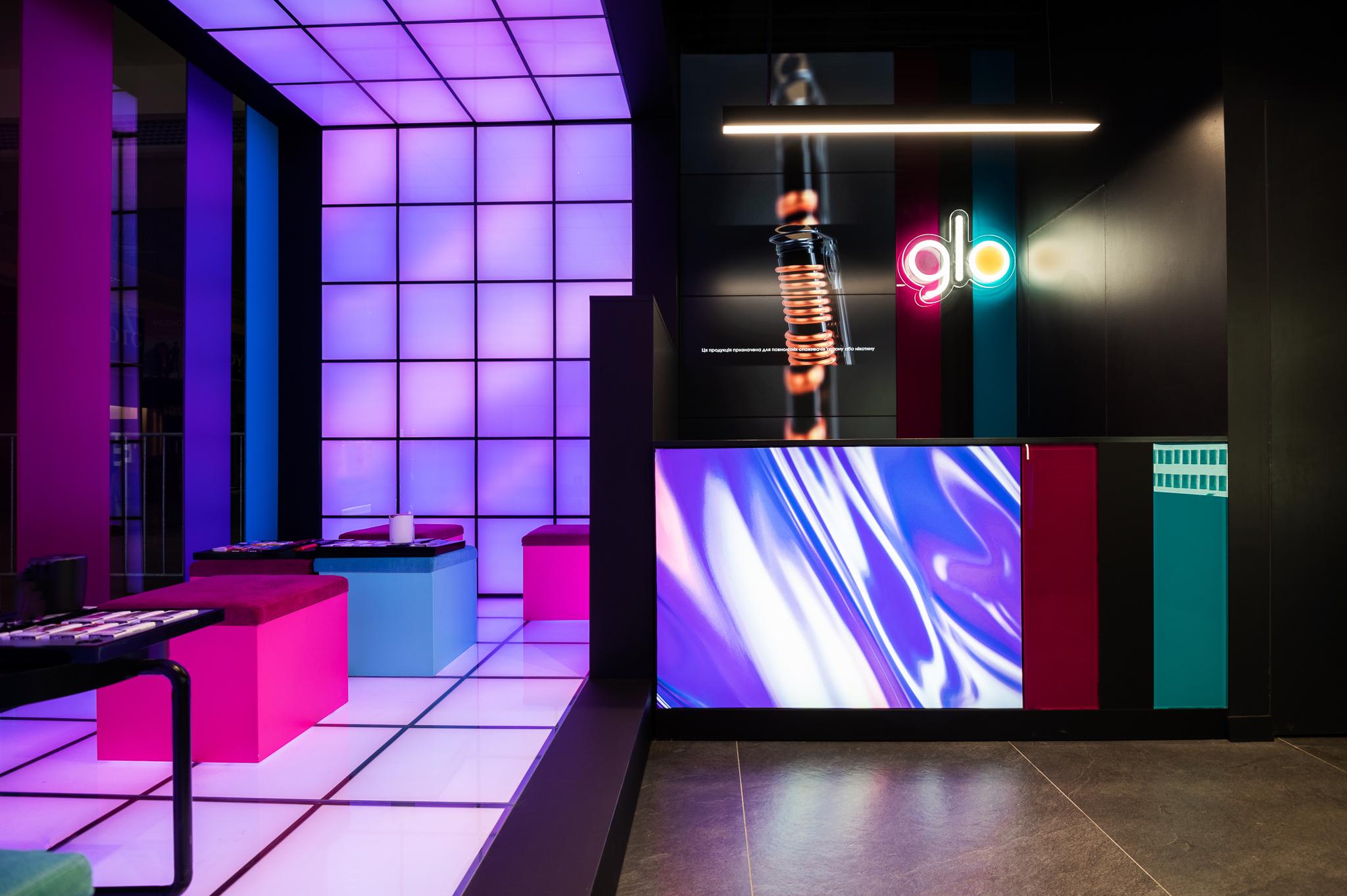
Retail space. Design by ZIKZAK Architects
Contactless payment and self-checkout
Contactless payment and self-checkout technologies speed up the shopping process, reduce queues and increase customer satisfaction. Take Amazon's in-store payment system, which allows you to pay with the swipe of your hand. The Amazon One system stores a customer's palm print on their registered credit card. This allows them to open automatic doors when entering a store and pay at the chain's self-service checkouts.
Radio Frequency Identification (RFID) and the Internet of Things (IoT)
RFID and IoT improve inventory management by providing accurate, real-time information on product availability. RFID tags on goods automatically transmit data about their location and quantity. IoT sensors continuously monitor storage conditions (temperature, humidity, etc.). Managers get up-to-the-minute information on inventory status without manual checks. RFID and IoT enable process automation, supply chain optimisation and more efficient warehouse operations. These technologies enable companies to significantly improve efficiency, reduce costs and increase customer satisfaction.
Customer behaviour analytics
Cameras and sensors, combined with machine learning algorithms, analyse shopper behaviour to help optimise product placement and personalise offers.
Augmented Reality (AR)
AR applications allow shoppers to virtually 'try on' clothes without having to go to a fitting room. This saves shoppers time and reduces returns.
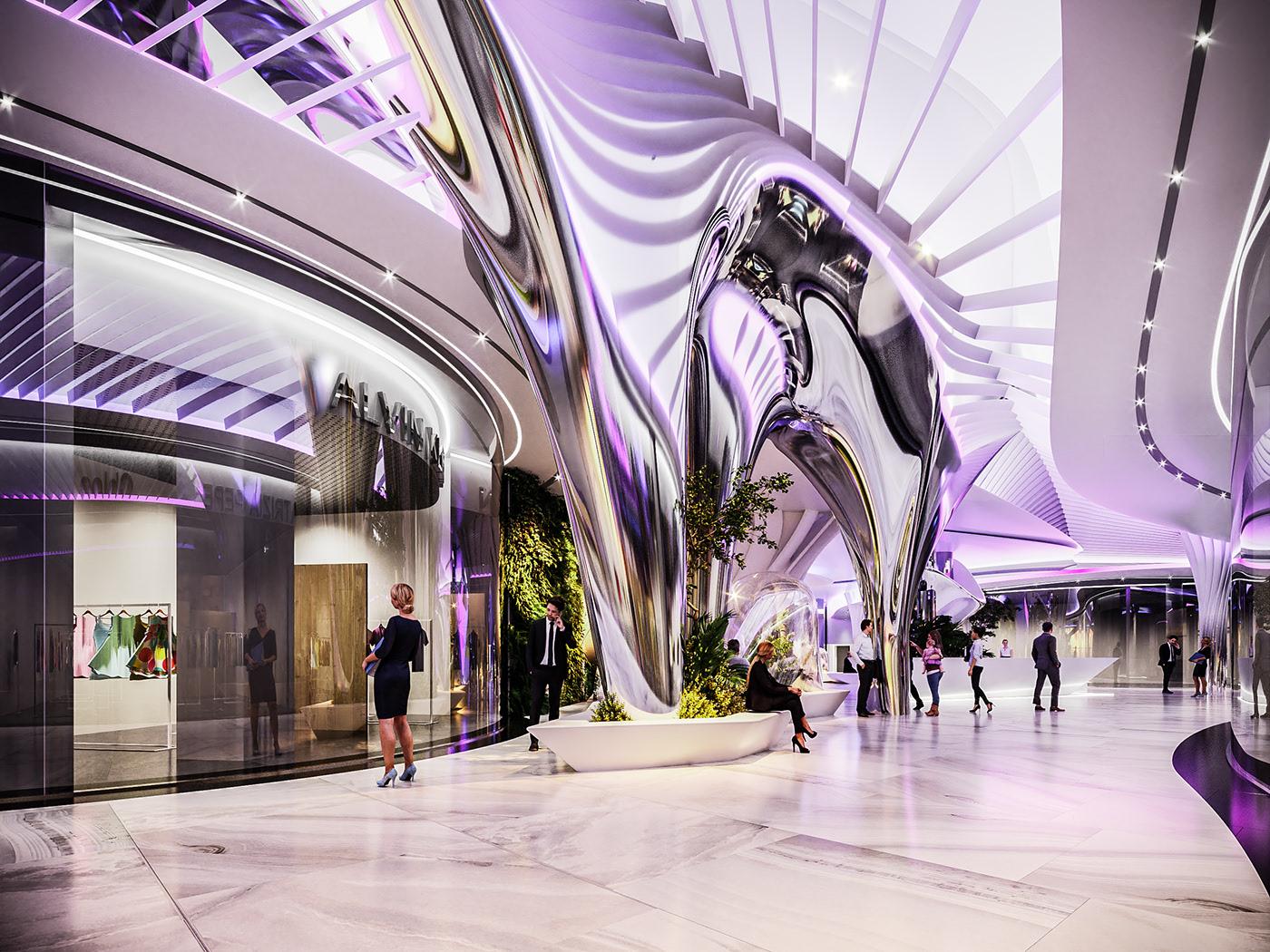
Retail space. Design by ZIKZAK Architects
For businesses, the adoption of digital technologies has several benefits:
- Increased customer loyalty;
- Increasing the average check thanks to personalised recommendations;
- Optimise operational processes;
- Gain valuable data about customer behaviour;
- Creating an omnichannel - one that utilises absolutely every way a brand can connect with a customer, the shopping experience.
Bringing digital technologies into the physical space requires significant investment and can be challenging to integrate. But not always: they can really be optimised by specifying the tasks these technologies need to solve in each specific case. A step-by-step approach and collaboration with experts in commercial interior design and IT integration is important. The role of design in this transformation is key. A professional commercial interior design studio can help integrate digital technologies so that they fit seamlessly into the space, enhance the brand and create a comfortable environment for customers.
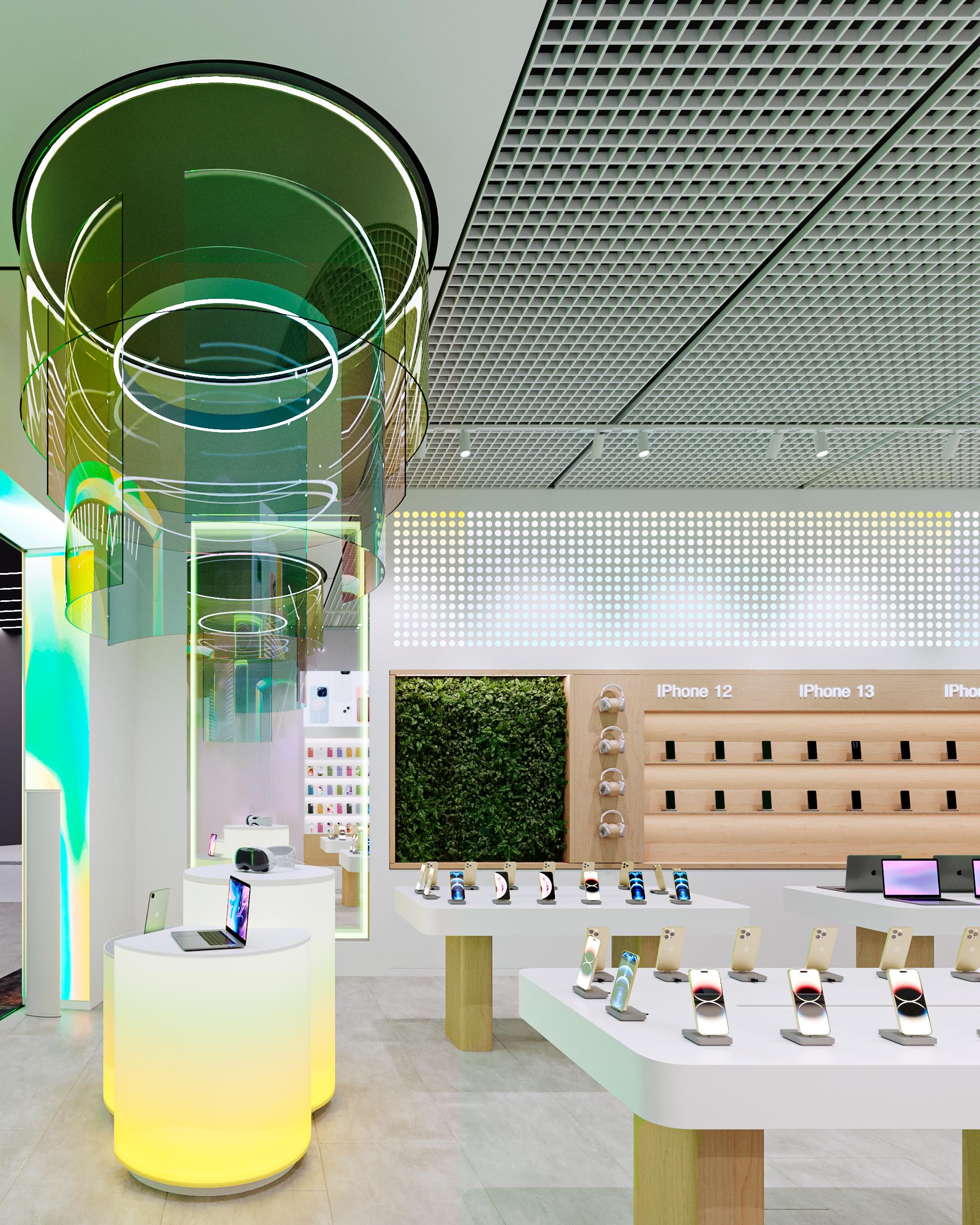
Retail space. Design by ZIKZAK Architects
Developments in information technology suggest that the boundary between digital and physical space will continue to blur. Shops of the future will not just be places to shop, but innovative hubs where technology creates a unique, personalised experience for each visitor.
Integrating digital technology into the physical retail space is not just a trend, but a necessity for businesses that want to remain competitive in the digital age. It is a way to create a unique shopping experience that combines the convenience of online shopping with the benefits of physical stores.
Read also:

